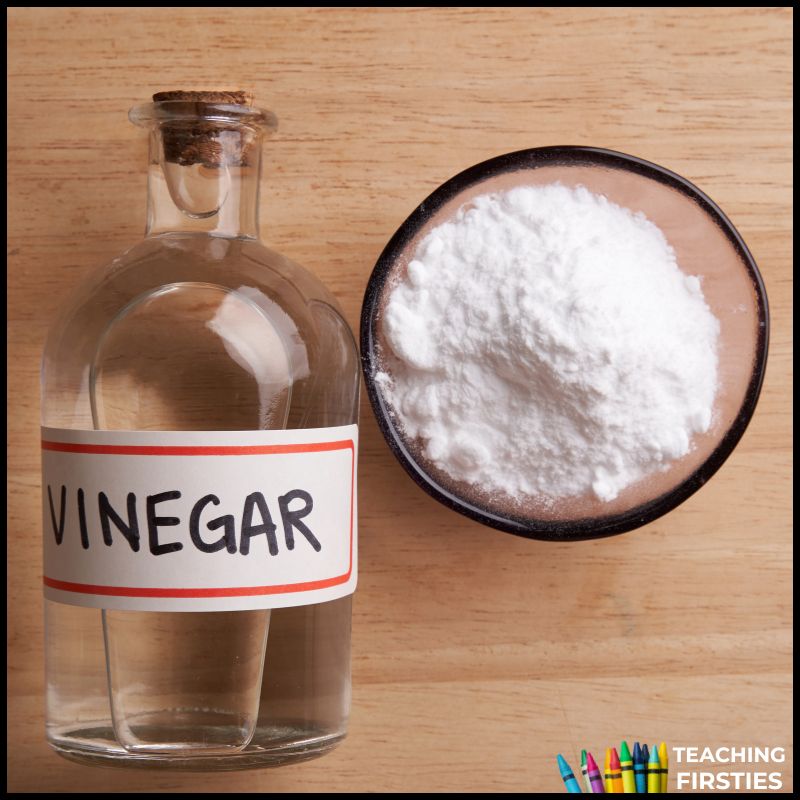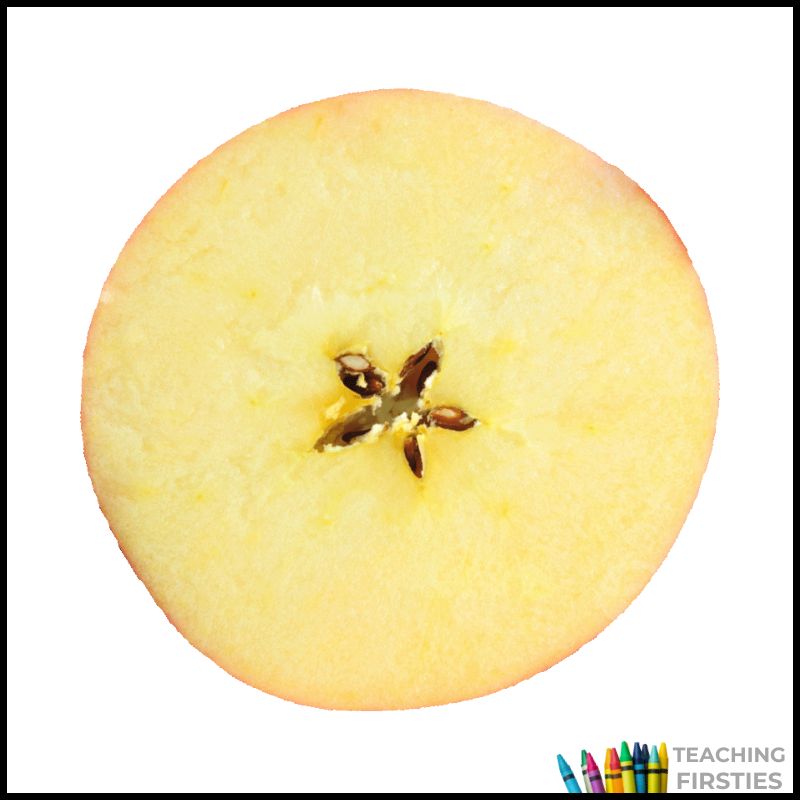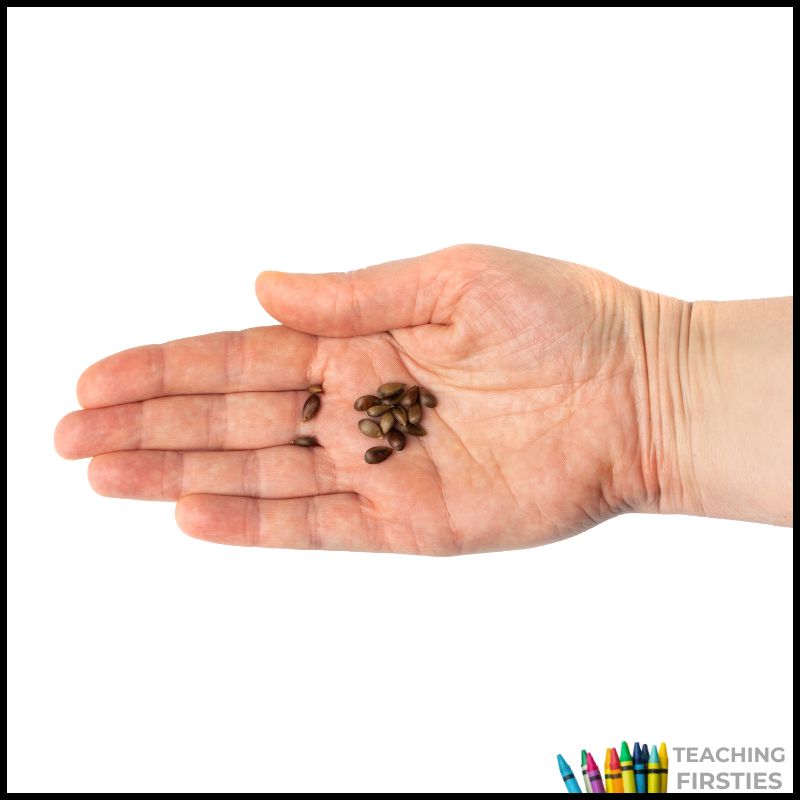Apple science experiments are a great way to bring hands-on learning into your fall curriculum. These six apple activities are simple to prep, easy to manage, and designed with first grade in mind. They use familiar materials and focus on science skills your students will learn—like observing, predicting, sorting, labeling, and comparing results.
Use them during your Apple Day celebration or throughout your fall science plans to reinforce real science concepts in an age-appropriate way. Each activity is classroom-tested and focused on helping students explore, ask questions, and make connections.
Tips for Apple Science Experiments
Apple science experiments are a great fit for fall, especially during your Apple Day celebration. These tips will help you stay organized and get the most out of your science time:
Review safety expectations: Even simple experiments benefit from a quick safety reminder. Have students wear goggles when working with vinegar, and remind them not to eat any materials unless told otherwise.
Use real student notebooks: Have students record predictions and observations in a science notebook. Even a simple folded booklet works. This reinforces writing and helps connect science to literacy.
Invite a parent helper or two to support your Apple Day activities. Extra hands make it easier to manage materials and guide students through each experiment.
Keep cleanup supplies ready: Have paper towels, wipes, and a trash bin nearby to make transitions smoother. A few extra bins for used materials can also help.
Use visuals: Anchor charts or picture cards can support vocabulary and help students recall steps or record results accurately.
Encourage student questions: Make time for discussion at the end of each experiment. Ask what surprised them, what they learned, or what they’d like to test next. A K-W-L chart can be used to record your student’s thoughts and questions.
These tips will help you run smooth, engaging fall science lessons that fit into your existing plans. You can use all six apple science experiments as a part of your Apple Day celebrations, or spread them out over the week.
Here are 6 apple science experiments for first grade classrooms:
1. Apple Oxidation Experiment
Objective: Test which liquids slow down the browning of a cut apple.
Supplies:
- Apple slices
- Lemon juice, water, vinegar, soda, and milk (or other liquids)
- Small cups or bowls
- Paper towels
- Chart or worksheet to record predictions and results

How To Do It:
- Cut the apple into similar-sized slices.
- Place one slice in each liquid.
- Let sit for 30–60 minutes.
- Observe and record which slices turn brown and which stay fresh.
Why This Experiment Is Important:
This teaches students about chemical reactions (oxidation) in a simple way. It also builds prediction and observation skills—two early science process standards.
2. Sink or Float? Apple Buoyancy Test

Objective: Explore the concept of buoyancy using different apple varieties.
Supplies:
- Large clear tub of water
- 1 apple
- Various other random items. Choose a few that float and a few that sink. Even better if it’s not an obvious prediction.
- Chart for predictions and results
How To Do It:
- Show students the apple and a selection of other items.
- For each item, ask them to predict: Will it sink or float?
- Drop each item in the tub and record results.
Why This Experiment Is Important:
This builds critical thinking as students realize that size and weight aren’t the only factors that determine whether something sinks or floats. It also introduces density in a very accessible way.
3. Apple Volcano
Objective: Create a mini volcano using an apple to observe a basic chemical reaction.
Supplies:
- One cored apple
- Baking soda
- Vinegar
- Food coloring (optional)
- Tray or paper plate

How To Do It:
- Place each apple on a tray.
- Fill the hollow center with baking soda.
- Add a drop of food coloring if desired.
- Slowly pour vinegar into the center and observe the fizz.
Why This Experiment Is Important:
This classic baking soda + vinegar reaction helps students visually see what happens when acids and bases mix. Using an apple makes it seasonal and fun.
4. Apple Dissection

Objective: Explore the parts of an apple through observation and labeling.
Supplies:
- 1 apple
- Safe knives for teacher to cut apples
- Paper towels
- Apple diagram worksheet or blank paper for labeling
- Markers or pencils
- Optional: magnifying glasses
How to Do the Experiment:
- Slice each apple in half—once from top to bottom and once across the middle—to show different views of the inside.
- Let students observe the slices up close. Talk about the skin, stem, flesh, core, seeds, and the star shape in the middle.
- Hand out a labeling worksheet or have students draw and label what they see.
- If available, let students use magnifying glasses to take a closer look at the seeds or the inner texture of the apple.
- After labeling, have a short discussion about the function of each part (e.g., seeds grow new apples, the skin protects the fruit).
Why This Experiment Is Important:
This activity reinforces observation skills and helps students explore and name the parts of an apple. By looking at each part, students learn vocabulary like flesh, core, and seeds. It also sets a foundation for understanding how apples grow—perfect for transitioning into the next experiment on the apple life cycle.
5. Apple Life Cycle
Objective: Help students understand how apples grow using real materials and visual sequencing.
Supplies:
- Real apple seeds (gathered from your dissection activity or saved ahead of time)
- Apple life cycle cards or printable visuals
- Glue sticks
- Scissors
- Construction paper or science notebooks

How to Do the Experiment:
- Begin with a short review of the apple dissection and point out how the seeds can grow into new apple trees.
- Show students the stages of the apple life cycle: seed, sprout, seedling, tree, blossom, and fruit.
- Have students cut out and sequence printed life cycle cards, then glue them in order onto construction paper or in their notebooks.
- Discuss each stage, focusing on what the apple tree needs to grow at each step (sun, soil, water, pollination).
Why This Experiment Is Important:
The apple life cycle teaches students about plant development in a concrete way. It supports vocabulary development (sprout, blossom, harvest) and builds understanding of science concepts like sequencing and cause and effect. Plus, it ties directly into your Apple Day activities by connecting hands-on exploration with seasonal science learning.
6. Taste Test Investigation

Objective: Explore sensory observations and data collection by tasting different apple varieties and recording preferences.
Supplies:
- At least 3–4 types of apples (e.g., Red Delicious, Granny Smith, Honeycrisp, Gala)
- Plates or napkins for serving
- Plastic knives or apple slicer (for adult use)
- Chart paper or whiteboard
- Student recording sheet (simple graph or checklist)
- Optional: labels or signs for each apple type
How to Do the Experiment:
- Cut each apple variety into small chunks and label the samples for students.
- Let each student try a small piece of each type, encouraging them to think about taste and texture (sweet, tart, soft, crunchy).
- After tasting, ask students to vote on their favorite. They can record their answers using tally marks, smiley faces, or by placing a sticky note on a class chart.
- As a class, create a bar graph to show the most and least popular varieties.
- Use discussion questions: “Why do you think so many students liked the red apple?” or “What word would you use to describe the green apple?”
Why This Experiment Is Important:
This activity combines science and math. Students use observation and comparison skills, make decisions based on sensory input, and practice graphing and data analysis. It’s a fun way to wrap up your Apple Day activities.
Wrapping Up Your Apple Day Science Experiments
These six apple science experiments are hands-on, easy to prepare, and designed for your first grade classroom. They don’t require complicated materials, and each one supports real science skills, like observation, prediction, sequencing, and graphing.
Use them throughout your fall science units or as part of your Apple Day. Together, they make a great addition to your Apple Day celebration and help students see how science connects to the world around them.
More Apple Activities for First Grade
Need more ideas to round out your Apple Week plans? Here are a few related blog posts to help you tie it all together:
First Grade Apple Day Activities For Writing, Science, and Reading – Get everything you need for a themed Apple Day—writing prompts, science, and reading suggestions all in one place.
Free Apple Writing Paper – Download 36 pages of apple writing pages—lined, unlined, drawing space, and prompts—all ready to print and use.
Easy Apple Writing Ideas For First Grade – Plan your writing block with cross-curricular writing ideas tied directly to your apple unit.
Apple Read Alouds For First Grade – A list of 21 apple-themed books perfect for science, SEL, and seasonal reading.




